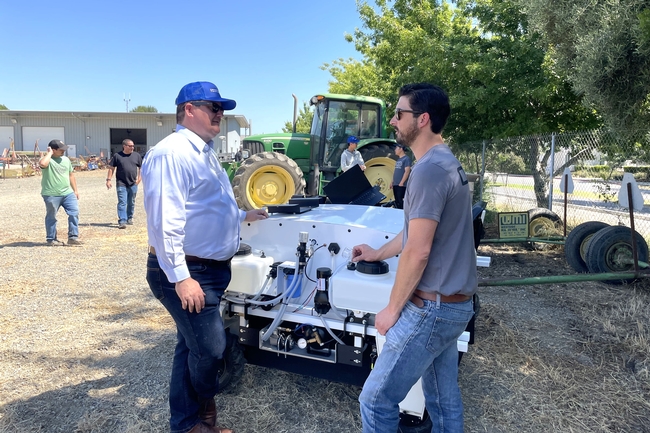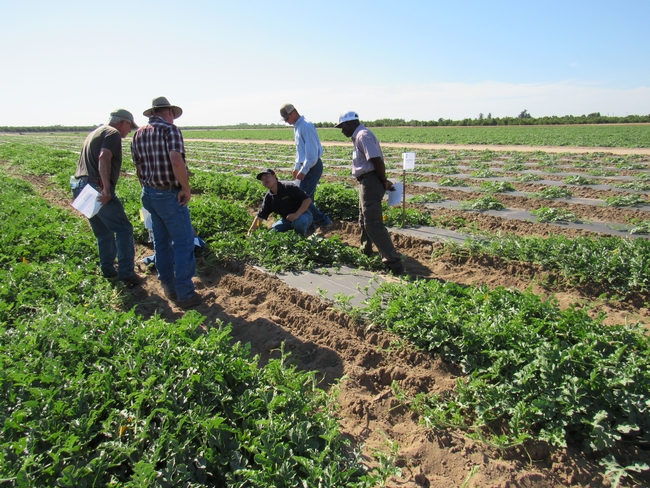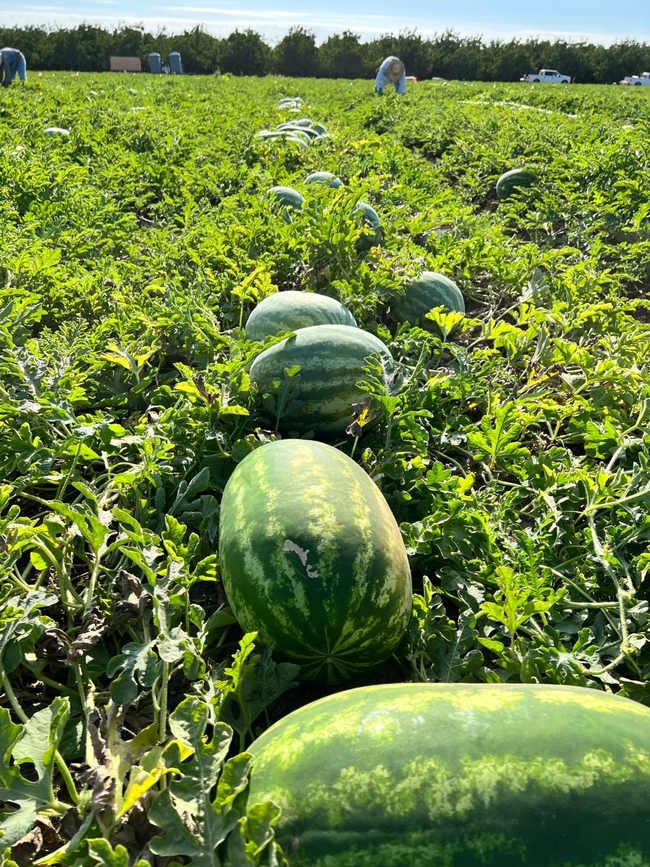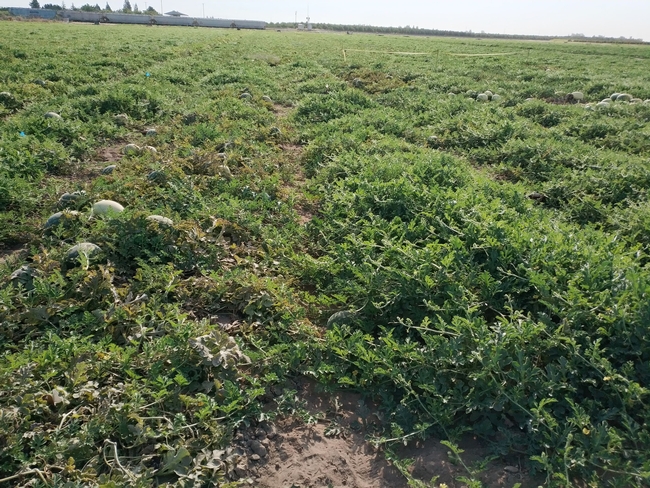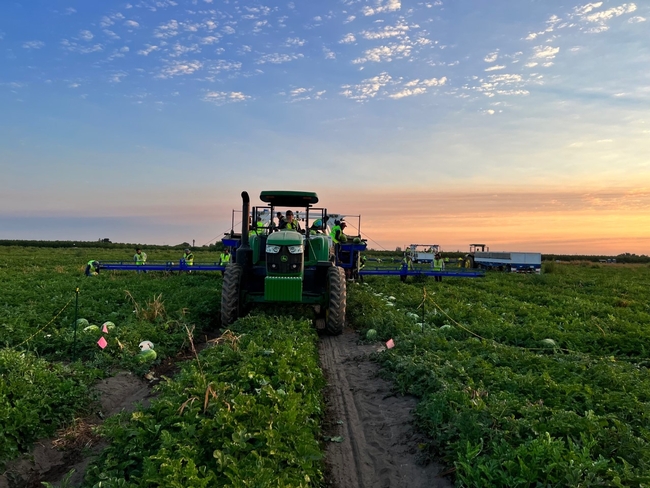
Posts Tagged: trials
The VINE announces call for startups to apply for field-trial support
Validation of Innovation Program provides supportive ecosystem for startups
The VINE, an initiative by the University of California Agriculture and Natural Resources, is now accepting applications for its VINE Validation of Innovation Program. The program aims to support innovation in the agri-tech sector, particularly in climate-resilient solutions for California food systems.
Made possible with support from a UC Climate Action grant, the program is inviting startups to apply, with a focus on providing comprehensive support for field trials – a critical stage for any agri-tech venture.
"Field trials are vital for validating new innovations in the agri-tech sector,” said Gabe Youtsey, chief innovation officer with UC ANR and founder of The VINE. “The VINE VIP aims to provide a supportive environment for carrying out these essential tests, bridging the gap between innovative concepts and real-world application."
Elif Ceylan, co-founder of OpenGate Partners and head of the VINE VIP, also stressed the importance of field trials.
"Field trials serve as a crucial phase where promising ideas either succeed or require adjustment,” Ceylan said. “We are committed to prioritizing this stage to ensure the effectiveness and relevance of emerging agri-tech solutions."
The VINE VIP offers more than field trials. It provides a supportive ecosystem for startups, including industry connections, access to a broad network of farmers and experts, comprehensive validation results and market entry support. The program is a unique accelerator that pairs startups with project partners in the agri-tech industry, facilitating Proof of Concept projects and commercialization trials for industry-defined challenges in California agriculture.
By connecting startups with farmers, academics and industry experts, the program aims to validate, advance, adopt and amplify innovative technologies, reducing technological risks and accelerating sales through its extensive industry network.
Startups interested in joining the VINE VIP can apply until Sept. 16, 2023. Detailed information about the program and the application process is available on The VINE's website at thevine.io/vip.
The VINE is an initiative of the University of California Agriculture and Natural Resources, dedicated to fostering agriculture, food, and biotech innovation in California. Our mission is to support industries and entrepreneurs while promoting technology innovation and commercialization for sustainable and equitable food systems. We connect entrepreneurs with public and private sector resources, encourage collaborations to address industry challenges, and promote regional capacity for global innovation as an economic opportunity.
Less water, more watermelon: Grafting can help growers yield more
UC Cooperative Extension advisor tests ancient technique, new to California melons
As growers across California navigate severe drought, supply-chain challenges and rising inflation, reducing inputs has become an existential necessity. And for watermelon growers, a new twist on a thousands-year-old practice is showing real promise.
In the summer of 2018, watermelon growers brought a pressing problem to Zheng Wang, who had recently joined University of California Cooperative Extension as the vegetable crops and irrigation advisor for Stanislaus, San Joaquin and Merced counties.
Growers were seeing an increasing number of their cartons rejected by supermarkets and other buyers because of the melons' inconsistent quality, and Wang wondered if the ancient technique of grafting would help the state's melon growers, who plant about 10,000 acres of the crop each year.
Although California is the No. 3 watermelon-producing state in the U.S. (behind Florida and Georgia), there has been relatively little research on the melon across the state.
“Watermelons seem to have attracted not too much attention compared to other cucurbits, both Extension- and research-wise,” said Wang.
Fresh from his postdoctoral work at The Ohio State University on grafting fresh market tomatoes, Wang knew that vegetable growers understood the theoretical benefits of grafting, which combines a scion (the above-ground part of a plant) with the sturdy rootstock of a related plant.
But watermelon growers needed to make sure the added expense of using grafted plants would pay off. They were looking for science-backed evidence that the technique could actually reduce costs overall, while maintaining or boosting productivity.
“Sometimes as farmers we want to test a new cultural practice or crop product,” said David Jarrett, field manager at Van Groningen & Sons, who grows watermelons in the San Joaquin Valley. “A person like Zheng can set up a meaningful experiment and he has the tools for qualitative and quantitative analysis; Zheng knows how to measure a hunch and assign it a verifiable number measuring success.”
In his first trials in partnership with growers in 2019, Wang tested whether they could plant fewer watermelon plants, spaced at greater distances apart, while producing a stable yield of high-quality melons. The idea was that grafted plants, which are more vigorous and grow larger leaves and wider canopies, would produce consistently marketable melons that could be picked up to seven or eight times during an extended harvest season.
“That way we can make one plant equal ‘two,'” explained Wang, noting that non-grafted plants tend to produce only two or three picks of good melons, with quality declining rapidly afterward.
Grafting shows 'a lot of potential for the future'
After two years of trials, the growers determined, with strong confidence, that watermelons planted 4-5 feet apart could produce a yield equal to – or surpassing – that of plants 3 feet apart (the standard for their non-grafted counterparts).
According to Wang, growers reported that, on average, their successfully grafted fields produced 15% to 25% more watermelons than non-grafted fields per acre, while using 30% fewer plants and the same amount of water and fertilizers.
With the potential for greater profitability, grafting could be a major boon during a particularly challenging time for growers.
“California agriculture is stressed competing for finite resources such as land, water, fertilizer and other safe but effective chemical tools, but outside of this realm we can improve some of our crops by grafting,” Jarrett explained. “Just as many tree crops are grafted, we are learning that other crops can be successfully grafted too; the goal is to create a heartier plant, which may grow better in marginal soils with reduced inputs.”
Confidence in the technique has led to a significant increase in the planted acreage of grafted watermelon across California – from less than 250 acres in 2018 to more than 1,500 acres in 2021. At the same time, growers have adopted 4 or 5 feet as the new “standard” spacing for their watermelon plants, enabling them to reduce their populations while maintaining or boosting yield.
“Using grafting has kind of opened a new channel in the watermelon world, and for all vegetable production in California,” Wang said.
Next up for Wang is testing various combinations of scions and rootstocks. This year, he began variety trials with rootstocks of various cucurbit family members (like hybrid squashes, Citron and bottle gourd), with hopes of producing results that watermelon growers could use to decide the best options for their local conditions.
“In sum, there are a lot of unknowns – but also a lot of potential for the future,” he said.
UC Davis Biodiversity Museum Day Includes Arboretum Tour of Texas Tree Trials
Entomologists, horticulturists, botanists, anthropologists, paleontologists, nematologists,...
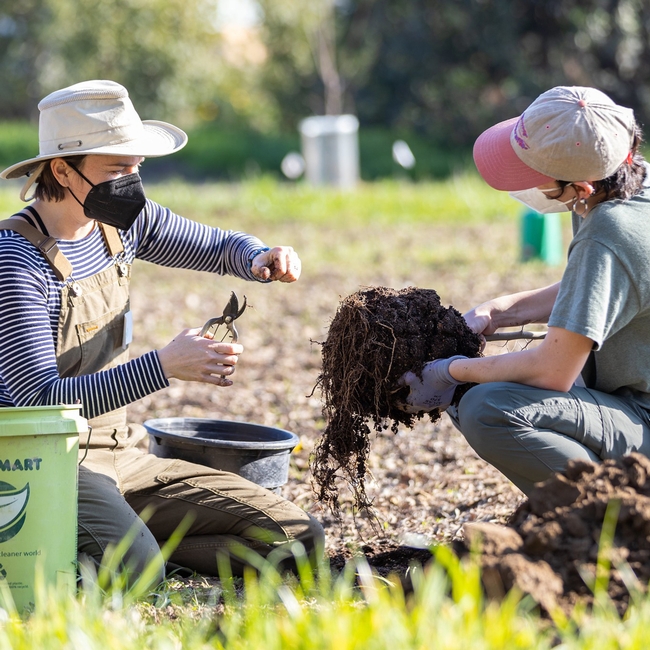
Urban Tree Stewardship (UTS) Learning by Leading™ Staff Mentor Abbey Hart (left) with UTS student team member Laia Menendez Diaz (right). (Photo courtesy of the UC Davis Arboretum and Public Garden)
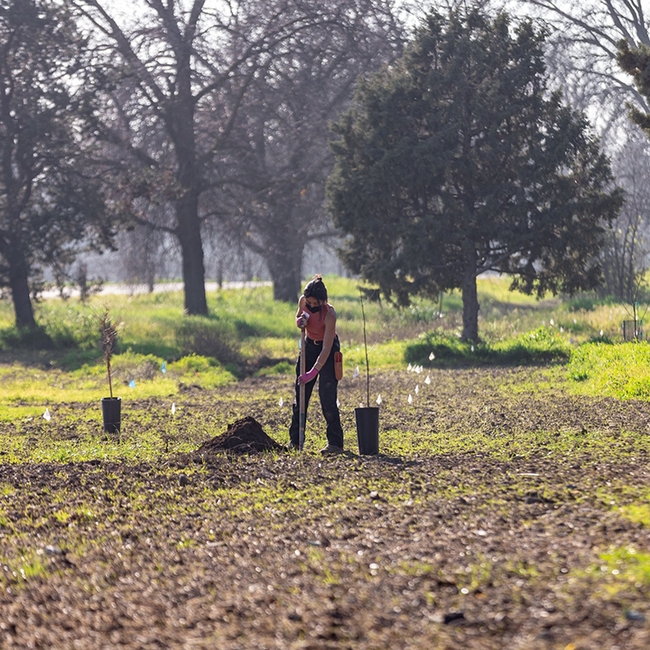
Urban Tree Stewardship (UTS) co-coordinator Alicia Aroche working in the Texas Tree Trials project in the Arboretum and Public Garden. (Photo courtesy of the UC Davis Arboretum and Public Garden)
UC Field Day showcases California’s dry-bean research advancements

Dry beans are a big business in California. In 2011, growers harvested 45,000 acres of dry beans valued at $58 million. Lima beans accounted for about 40 percent of this total acreage, with California producing nearly 99 percent of the U.S. domestic supply of dry lima beans.
Why should we be so interested in beans? From a nutritional standpoint, dry beans are a healthy food choice - an excellent source of protein, fiber, vitamins and minerals, plus they’re very low in fat. Organizations such as the American Heart Association, the American Diabetes Association and the USDA’s My Plate all recommend including beans in one’s diet to reduce cholesterol, maintain normal blood sugar and to maintain a healthy weight. The California Dry Bean Advisory Board posts many bean recipes on their website at http://calbeans.org/.
From a production standpoint, beans are a crucial crop for farmers. California growers produce four main classes of dry beans, including limas (large and baby), common beans (such as kidneys, pinks, whites, cranberries and blacks), garbanzos (chickpeas), and cowpeas (blackeye beans). Garbanzo beans are grown as a winter crop, while the others are produced in the summer. California’s dry beans are marketed throughout the world, including Japan, Mexico, Canada, and the United Kingdom. California also grows dry bean seed stock for export to other states and international markets.
In rotation with other crops beans help control weeds, add biomass to the soil via plant matter disked into the ground after harvest, and require relatively few pesticides. In addition, beans, as legumes, fix nitrogen from the air via nitrogen-fixing bacteria that colonize the roots, forming nodules. Cowpeas, for example, fix about 100 pounds of nitrogen per acre, providing most of the nitrogen needs for this crop. Likewise, garbanzo beans require minimal nitrogen inputs for crop production. Economically, beans can enhance the annual farm profitability because common beans and cowpeas can be double-cropped with grains or forage crops, producing two crops in one year.

The participants learned about UC research trials, led by Paul Gepts, professor in the Department of Plant Sciences at UC Davis, focus on dry bean breeding programs for pest and disease resistance, drought tolerance, organic production, and yield and quality increases. “Dry” refers to allowing the beans to fully mature and dry on the plants, as opposed to picking the beans green as a fresh market vegetable.
Many of today’s commercially grown dry beans come from University of California varieties, such as those shown at the UC Field Day. Seed germplasm for different genetic traits are selected from all over the world. The lima bean trial at UC Davis included 56 seed selection entries, the heirloom beans included 25 entries, and cranberries and pink beans had 134 entries. Earlier this year eight advanced line garbanzo entries were tested. UC Davis researchers work with hybrids produced by hand crosses to increase seed yield, quality, pest and disease resistance and plant vigor. They receive funding from a variety of sources including the California Dry Bean Advisory Board and USDA.
As shown from this field day, UC research is leading the way to ensuring that the future of California’s dry bean industry remains strong. These efforts will continue to enhance sustainable farming practices in our state and provide nutritional benefits to consumers.

So, the next time you’re in the produce section of your favorite grocery store, enjoy some California-grown beans. From the field to fork, these beans are the best of the best.
Additional resources:
Blackeye bean production in California, UC ANR publication number 21518.
Common bean production in California, UC ANR publication 8402.

Dry bean field day luncheon at UC Davis. (Photo: Kathy Keatley Garvey)

Bean plant. (Photo: Kathy Keatley Garvey)

